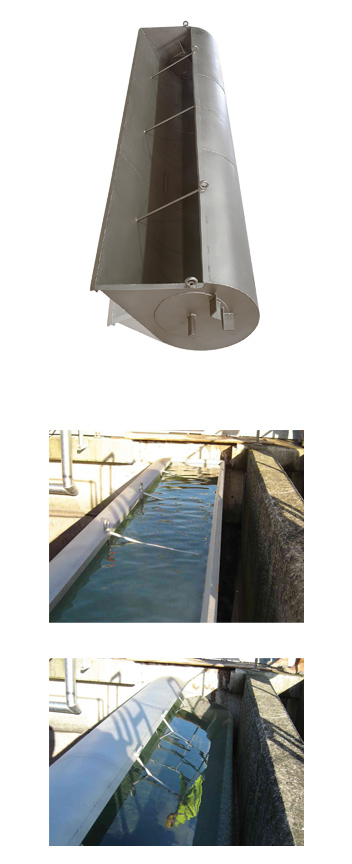
Tipping Buckets are devices whose capacities are calculated according to the dimensions of the Storm tanks(installation height, lenght to clean, slope). To clean the tank this device is filled with water, once it is complete full it tips and flush all debris along the tanks until the sump.
Operation:
During normal situation it is in balance position. As soon as there has been detected that the chamber has emptied, one proceeds to the filling of the bucket with water supply(or waste water) When it reaches the water capacity for the one that it has been designed, the bucket losses its center of gravity and tilts, generating a water wave that sweeps all the sediments towards the lowest part of the tank.
Design:
There is a direct relation between the capacity of the cleaner-bucket (liters/meter), the length to be cleaned (L), the fall height (H) and the slope of the bottom (%). See figures 1 and 2.
These are the three parameters that determine the capacity in liters per meter of the cleaner, designed with capacities between 200 and 2000 liters/meter. The dimensioning of each holding tank calls for a study in order to obtain efficient and economic cleaning.
Manufactured in lengths of up to 10 lineal meters, they can be positioned in parallel in tanks with widths greater than 10 meters. See Figure 3.
Made of Stainless steel AISI 304 or AISI 316, corrosion is avoided even in the most aggressive environments.
The capacity of the clean water collection channel must be at least 1.2 times the volume of water in the cleaner. This channel must have a gradient of 3% towards its outlet and a minimum depth of 0.30 m.
 Sistema de limpieza mediante limpiadores autobasculantes
Sistema de limpieza mediante limpiadores autobasculantes


